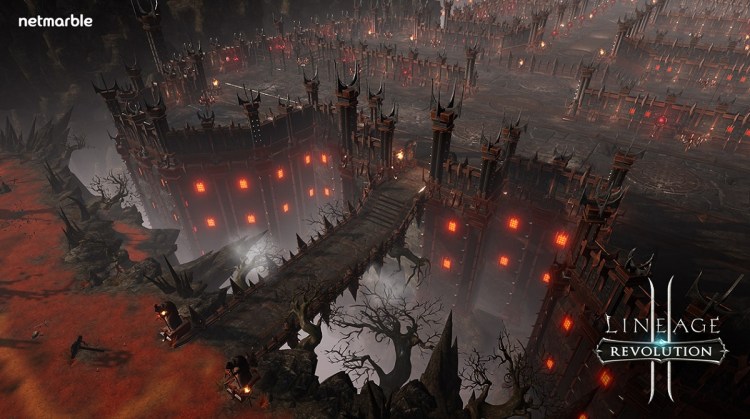Lineage 2: Revolution has become one of the world’s most successful mobile games, with more than 30 million players on iOS and Android as of a few months ago. Licensed by NCSoft and built by Netmarble, the massively multiplayer online role-playing game (MMORPG) game has helped the South Korean company go global.
Publicly traded, Netmarble has a market value in excess of $8.9 billion. But it wants to get bigger, and that’s one of the reasons it intends to join the bidding for rival South Korean firm Nexon, whose owner has indicated plans to sell. Netmarble hopes to join a consortium of companies bidding for Nexon.
I spoke with Simon Sim, the president of Netmarble U.S., about the growth of mobile gaming, which has become $63.2 billion global market, according to market researcher Newzoo. Based in Los Angeles, Sim is in charge of Netmarble’s expansion in the U.S., which is a very different market from its home country.
I asked him his views on player boycotts, blockchain and cryptocurrency, augmented reality and virtual reality, the Chinese government’s return to approving mobile games in China, the battle royale explosion, and sunsetting older games.
Here’s an edited transcript of our interview.
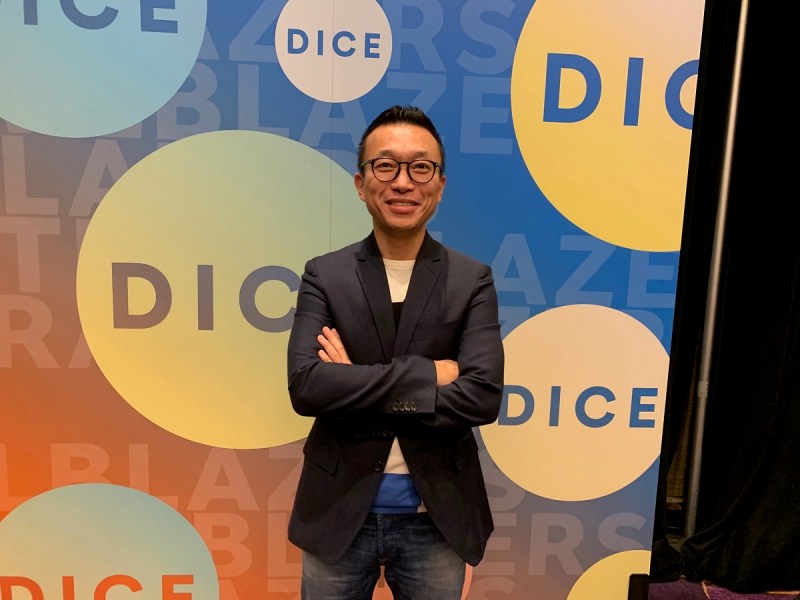
Above: Simon Sim is president of Netmarble US.
GamesBeat: What’s been some of your most recent news?
Simon Sim: A couple of things. We’re expecting more games this year and next year. Some games we’ve already announced that will launch within this year, like King of Fighters All Star. We’ll also announce more during GDC and later on.
GamesBeat: Is that activity still mostly in the mobile space?
Sim: Yes, still mobile. But we’ve also invested in some PC and console game studios in Korea. We’re expecting that cross-play behavior will become more popular, and we’re jumping on that trend. We’re timing it to reach massive scale. We’re closely following that behavior.
GamesBeat: I saw that Vainglory is doing cross-platform. It makes sense for that kind of game.
Sim: A couple of other games have already announced they’ll support cross-platform, with connected progression.
GamesBeat: I’m not sure I believe that people can be equally empowered on every platform. Can mobile players keep up with PC?
Sim: Operation-wise, management-wise, it can be unfair, yeah. But a progression connection, cross-play supporting progression, could make sense. And in some genres it could be more fair. We’ll keep observing that. We’re also working toward joining the bidding for Nexon. There could be some synergies with us, so we’re working on that.
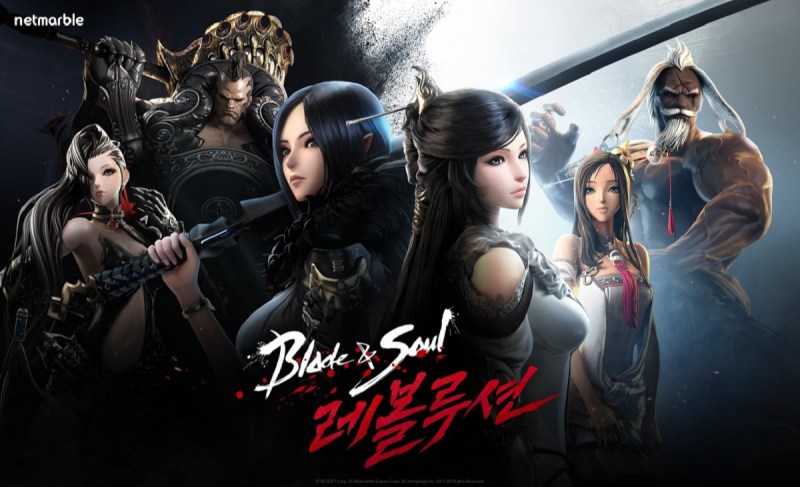
Above: Blade & Soul Revolution is one of Netmarble’s hits.
GamesBeat: What more do you have to do there? You’re already pretty global.
Sim: More than 70 percent of our revenue comes from outside Korea. We believe we’ve already become a global company. But we’re still trying to expand even more in the global market. Some of our games, we launch in Korea in Japan, but at the same time we also have titles that we believe are a good fit for the western market, or that we’re targeting specifically at the western market. For example, Project M, with Magic the Gathering, is aiming more at the western target.
That’s our strategy. Some games are globally accepted and we’ll bring those to the western market. Some games, we’ll make a western-centric, western-focused version for that market. We’re diversifying in terms of both genre and IP.
GamesBeat: It seems like Asian gamers are better behaved than Western gamers. Blizzard, with Diablo, and a lot of others—I see a lot of boycotts happening in Western games. I don’t hear so much about that happening elsewhere. With boycotts or strikes or revolts, it seems like a difficult market sometimes.
Sim: Some of that, I agree with it. Asian gamers are much more hardcore and put more time in playing their games. In esports, a lot of the top esports teams are Asian. But in other ways—in the case of Lineage 2: Revolution, Western gamers may play for less hours than Asian gamers, and may be less accepting of some mechanics. If we bring the same balance as in Asia to the western market—Asian gamers may play four to six hours a day, and we don’t see Western gamers playing as much time. So we make some balance changes and tweaks.
When we released Lineage 2: Revolution in the west, though, we found players putting in more than four hours a day, every day. With some games, our players have surprised us. Western players are starting to accept certain mechanics if the gameplay is innovative enough. We’ve learned a lot about our players through our games.
GamesBeat: As far as high-end graphics go, what do you notice from 2018 and what do you see happening in 2019? Will people really embrace that kind of game on mobile?
Sim: We’re very interested in high-fidelity games, as you know. We launched Lineage 2: Revolution in 2017. That kind of high-fidelity game is getting more and more popular. We’re seeing a lot of games with high-quality graphics launching in the western market. In 2019 we’re preparing to launch Blade & Soul Revolution. Lineage 2: Revolution had 200-player battles, a massive scale. Blade & Soul Revolution has 500-versus-500 [battles], 1,000 people fighting each other at once. The technology is very innovative, and the device specs are improving. In 2019 and beyond, high-fidelity games will be getting more and more popular.
Bandwidth is a factor, too. It’ll take some time, but 5G is starting to become broadly available. One of our challenges in that kind of massive real time battle, the packet speed and latency is a limiter. But our bandwidth is expanding and device specs are improving. I see even more massive battles becoming popular. We’re preparing to meet that expectation.
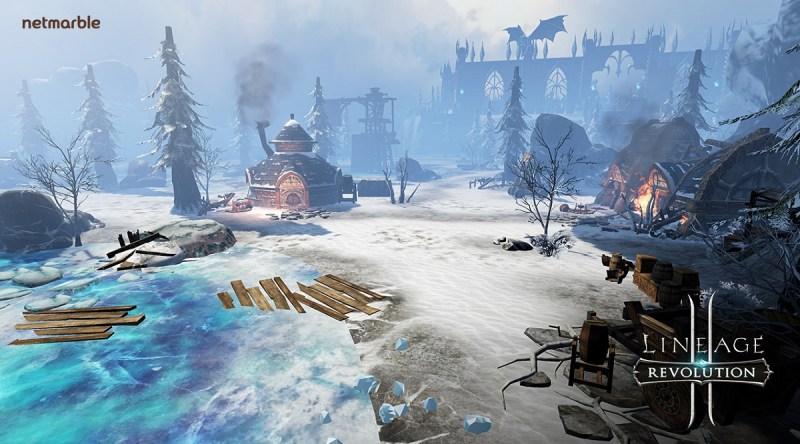
Above: Lineage 2: Revolution
GamesBeat: Do you see a value in having that many players? It seems to be where players are heading, that they want this kind of game where they’re in an army with thousands of people battling it out.
Sim: A big challenge for us is optimizing for device specs. When we launched Lineage 2 Revolution — not just in the western market, but also southeast Asia and Latin America – we had to deal with regions that were dominated by lower-end devices. We’ve been doing a lot of optimization for those device specs and lower bandwidth. We’ll see. We’ll try to bring that core fun of massive battles to all of our users. We’re also working on optimizing for a mobile-friendly UI and UX. That’s very important.
With Lineage 2 Revolution we had automatic fighting and automatic questing. There was a lot of internal debate over that design. Auto-questing is very convenient. There are pros and cons, though. It’s convenient for a mobile device, where it’s hard to micro-manage fighting. Auto-questing made the game more accessible for mobile users, but at the same time, some players actually like that detailed management. They wanted that complete control. They felt like they were just watching the game. So there are pros and cons. But we believe that function makes our game more popular, because it reaches a broad audience through being more accessible.
We’ll keep doing that. We’re not just making PC games for mobile. We’re studying mobile-friendly mechanics and we’ll keep building those into our games. Even in something like a massive battle, people can join in and learn easily. That’s what we’ve been learning from our previous games.
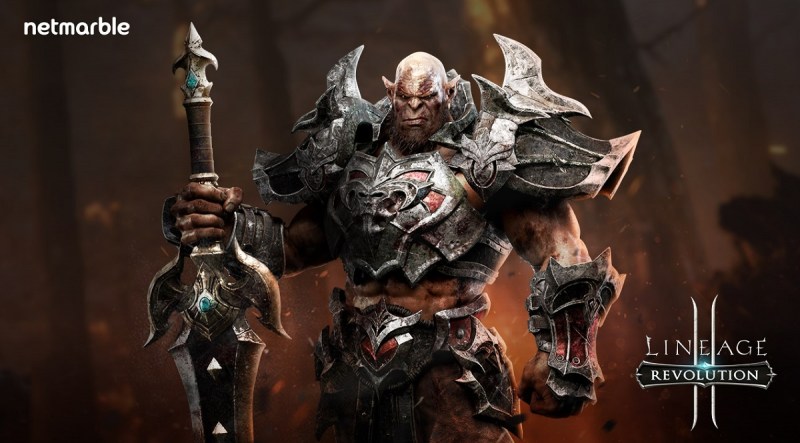
Above: A friendly Orc in Lineage 2: Revolution.
GamesBeat: What do you think about your older games and how soon you should sunset them? Do you need to think about that, or can you operate them forever?
Sim: In our case, some of our games are still very popular in Korea, very popular in other parts of Asia like Taiwan and Thailand. They’ve been around for five years or more. We think that if we manage our games correctly, supporting them with new content and live operations, even mobile games can sustain for more than four or five years. Marvel Future Fight has been going for four years. It depends on our capability for live operations and content updates. We believe there’s no hard rule about shutting down a mobile game in three or four or five years.
Our background is in the PC free-to-play market. Some PC games have sustained for more than 10 years. That capability helps us a lot in managing free-to-play games on mobile. There’s a similarity in how users consume content and what they’ll accept. We’ll keep working on that.
GamesBeat: What do you think about the battle royale genre as an opportunity on the mobile side?
Sim: One of our strategies is building a diverse team and a diverse genre portfolio. We have action-RPG games, MMORPG games, casual board games, fighting games. Battle royale is an interesting genre. We’re keeping watch on that. We’ve demonstrated something during G-Star last year, an MMORPG style of game with a battle royale mode. It’s called A3: Still Alive. It had a good reception from players and we got a lot of press interest. It’s an interesting genre, so we’ll keep trying. But we’re not going to exactly follow any other game. We’ll try something more innovative. We need to prepare for future trends or we won’t be successful.
GamesBeat: Are you still confident in the mobile market overall? Is that still where the growth is?
Sim: It’s getting more and more competitive. Based on the AppAnnie reports, a new game launched in 2018 that can make it into the top 20 grossing chart is a very rare case. Not many newly-launched games have cracked the top 20. Familiar games are moving up and down. It’s a very challenging market. But we believe that if we bring new kinds of fun with hybrid genres or different kinds of IP – we’re working on a game with BTS, for example – we’ll have a chance. We’ll keep innovating or we’re not going to succeed.
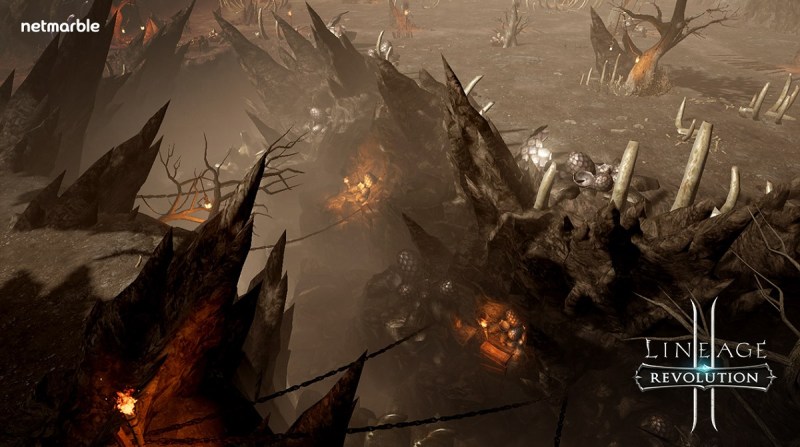
Above: Lineage 2: Revolution is a pretty game.
GamesBeat: Is the Chinese market starting to be more predictable and stable? Or is it still a difficult one?
Sim: It’s hard to say right now. You may know that the Chinese government is starting to approve more games. We’ve already preparing some games for release in China. We’re finishing up culturalization and we’re waiting for approval. So we wait. The feeling is positive for now.
GamesBeat: They’ve been approving some smaller games first.
Sim: Right. But we think it could be coming in the future eventually. We’re doing the culturalization and localization work to prepare for launch in China.
GamesBeat: As far as acquisitions, if you make them, what is the pattern for you? What are the kinds of things you’re looking for?
Sim: If you look back on our previous acquisitions, like Jam City—our subsidiary studios are strong in certain genres, like action-RPG or MMORPG or casual board games. But western-style puzzle games are different from our existing specialties. Jam City was very strong in that genre, so that’s why we invested there. If you look at Kabam, Marvel Contest of Champions looks like an action game, but underneath, it’s more like an RPG. You collect heroes and make them stronger. It has a lot of community gameplay, like alliance wars and alliance quests. It’s very much like an RPG. Kabam’s team is very strong in that western style of RPG, so that’s why we acquired Kabam. In all these things we try to create some synergies through mergers and acquisitions. We’ll keep looking for new opportunities.
GamesBeat: And there’s always Nexon, right?
Sim: [laughs] We also invested in Big Hit Entertainment. They’re the music label behind BTS, the K-pop idol group. BTS could be a big IP in synergy with games. Every time we invest we think about that kind of synergy, filling in a piece that we’re missing.

Above: Simon Sim of Netmarble US.
GamesBeat: Are you looking seriously at things like blockchain and cryptocurrency?
Sim: Internally we’ve researched those kinds of things. We’re interested. But it’s a matter of timing and what kind of synergy we can create. It’s a big trend in IT, one of the biggest ones, so we’ll keep following it. AI is another one. Machine learning-based AI is very popular. That’s another trend we’re very closely looking into. We’re building an internal AI lab. It’s getting bigger and bigger. The head of our lab has been working with IBM’s Watson machine learning and AI. We’ve brought him in to lead up our technology, all the AI development for Netmarble’s teams. We’ll keep following those kinds of technology trends.
AI has become more of a basic element of game technology. Testing is a huge part of game development, of course. In mobile games we need to test a lot of different device specs, because the Android market is so fragmented. For testing automation we use AI technology, as well as marketing automation. We also use AI technology to develop real time game opponents. There are lots of areas where AI technology can help our development and marketing. It’s more like an infrastructure technology than an application-level technology. We’ll keep researching.
GamesBeat: Are VR and AR interesting to you as new areas of exploration?
Sim: It’s hard to say what’s more or less important. In VR and AR, if we find a good fit with content, they might be getting bigger, but it’s a matter of finding which content is a good fit. As AR and VR technology becomes more popular, we’ll keep considering the question. We’ll keep trying. Some of our games already have AR features, like fighting in an AR view. If we fight together, we might see the same background from the perspective of your smartphone or my smartphone. We’ll keep testing those features and seeing how users accept them, trying to figure out how to deliver new kinds of fun to build more popular games.
